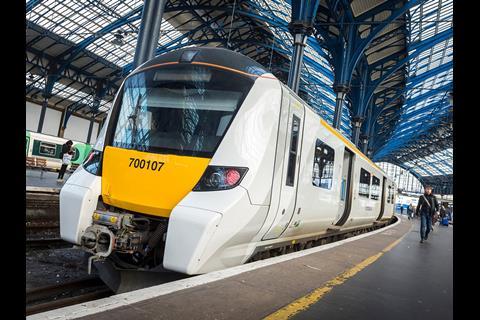UK: Some of the extensive disruption experienced by passengers on the Thameslink, Southern & Great Northern franchise over the last three years could have been avoided if the Department for Transport had taken more care to consider passengers in its design of the franchise, head of the National Audit Office Amyas Morse said when the NAO published its report into the franchise on January 10.
The report looks at the causes of disruption, and makes recommendations that should be taken into consideration when planning future franchises.
The NAO said DfT had been aware that the Thameslink Programme of major upgrades would cause disruption, and so chose a franchise model where the revenue risk fell on DfT rather than the operator. The resulting contract was ‘complex and ambitious’, and DfT had not fully worked out how the individual elements would work together.
Recognising than plans to expand driver-only operation would increase the risk of industrial action, DfT included contingency arrangements in the contract. However it did not fully evaluate the possible effects, nor did it ask franchise winner Govia Thameslink Railway to do so. NAO said a joint statement opposing DOO issued by the RMT and ASLEF unions 18 months after the contract award would have been ‘difficult for the Department or bidders to foresee’.
DfT had not sought sufficient assurance that GTR would have enough drivers when it took over the franchise. GTR received fewer drivers than the number it had expected, but even that would still have left a shortfall.
DfT’s franchise design did not consider the underlying condition of the existing infrastructure, and it contracted GTR to deliver increased services despite concerns from Network Rail and the operator that the network could not support these reliably.
Despite the poor performance of services, fare revenue met DfT’s expectations. Between September 2014 and August 2017, DfT received £3·6bn in fare revenue and paid Govia Thameslink of £2·8bn, meaning that it has earned a return for the taxpayer of £760m, net of £33m of passenger refunds paid by the DfT.
Recommendations
NAO makes a number of recommendations:
- When designing franchises contracts, DfT should carry out scenario planning to assess how the constituent parts work together, how the performance would be managed and the likely effect on passengers should any risks crystallise.
- DfT should work more closely with Network Rail to understand the impact of high frequency of services on congested parts of the network, how to recover from disruption, and the trade-offs between capacity and reliability;
- DfT should strengthen its monitoring of operators’ crew planning when they are near the end of their franchise terms as well as ensuring that workforce projections in franchise plans are realistic;
- Major enhancement projects are likely to produce planned disruption, so DfT and Network Rail should gain assurance at the outset that the likelihood of unplanned disruption is minimised. This would require a more integrated approach, with consideration of whether work to improve resilience should be carried out before the project begins.
Response
Responding to the report, DfT said ‘clearly the disruption passengers have experienced is unacceptable but the NAO recognises that service has improved over the last 12 months. The government has taken a number of steps to ensure this improvement, including the provision of an additional £300m to improve reliability on the Brighton Main Line. We expect service improvements to continue as the Thameslink Programme is completed.’
GTR Chief Executive Charles Horton said the NAO had identified ‘numerous root causes’ for the challenges the operator had faced. 'These difficulties have sometimes been greater than expected and we regret the disruption caused to our passengers’, he continued. ‘It is only right that a franchise of TSGN’s unprecedented scale and ambition receives scrutiny, and I am more confident than ever that its trailblazing achievements will be felt by rail travellers for generations to come.’




















